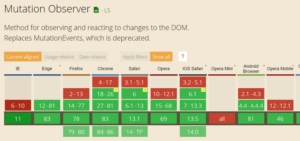Mastering YouTube Keyword Research: A Comprehensive Guide to Uncovering Video Ideas

Keyword research is a foundational aspect of YouTube content creation, serving as a roadmap for discovering relevant topics, understanding audience interests, and optimizing videos for search visibility. By conducting thorough keyword research, creators can identify trending topics, uncover niche opportunities, and tailor their content strategy to maximize discoverability and engagement. In this comprehensive guide, we’ll explore proven techniques, creative strategies, and practical tips for conducting keyword research for YouTube video ideas, empowering creators to unlock the full potential of their content and connect with their target audience effectively.
Understanding the Importance of Keyword Research
Before delving into the specifics of conducting keyword research for YouTube, let’s first understand why it’s essential for your video strategy:
Benefits of Keyword Research:
- Discoverability: Keyword research helps improve your video’s discoverability by identifying terms and phrases that your target audience is searching for on YouTube.
- Relevance: By targeting relevant keywords, you can ensure that your videos align with viewer interests and preferences, increasing the likelihood of engagement and retention.
- Competitive Advantage: Understanding keyword trends and competition allows you to identify opportunities to stand out in crowded niches and capture audience attention.
- Optimization: Keyword research informs the optimization of your video titles, descriptions, tags, and content, improving your video’s ranking and visibility in YouTube search results and recommendations.
Strategies for Conducting Keyword Research
Now, let’s explore strategies and best practices for conducting keyword research for YouTube video ideas:
1. Identify Seed Keywords:
Start by identifying seed keywords or broad terms related to your niche or topic. These could be general terms that describe your content or industry, such as “cooking tips” for a cooking channel or “fitness workouts” for a fitness channel.
2. Use Keyword Research Tools:
Utilize keyword research tools such as Google Keyword Planner, SEMrush, Ahrefs, or TubeBuddy to generate keyword ideas and analyze their search volume, competition, and relevance. These tools provide valuable insights into popular search terms and trends on YouTube.
3. Analyze YouTube Autocomplete and Suggestions:
Take advantage of YouTube’s autocomplete feature and suggested search terms to uncover additional keyword ideas. Start typing your seed keywords into the YouTube search bar and observe the autocomplete suggestions to see what users are searching for.
4. Explore Related Searches:
Scroll to the bottom of YouTube search results or watch pages to explore related searches and topics. These related searches provide additional keyword ideas and insights into viewer interests and preferences within your niche.
5. Leverage Long-Tail Keywords:
Consider targeting long-tail keywords or specific phrases that are less competitive but highly relevant to your content. Long-tail keywords often have lower search volume but can attract more targeted and qualified traffic to your videos.
6. Analyze Competitor Keywords:
Study the keywords used by your competitors in their video titles, descriptions, and tags to identify opportunities and gaps in your own content strategy. Look for keywords that are driving traffic and engagement for similar channels in your niche.
Best Practices for Keyword Research
As you conduct keyword research for YouTube video ideas, keep these best practices in mind to maximize effectiveness and impact:
1. Focus on Intent:
Consider the intent behind each keyword and choose terms that align with the goals and objectives of your video. Are viewers looking for information, entertainment, inspiration, or solutions? Tailor your content to match their intent and provide value accordingly.
2. Prioritize Relevance:
Prioritize relevance when selecting keywords for your videos, ensuring that they accurately reflect the content and topic of your video. Avoid using misleading or irrelevant keywords that may attract the wrong audience or result in viewer dissatisfaction.
3. Balance Volume and Competition:
Strike a balance between search volume and competition when selecting keywords for your videos. Choose keywords with a reasonable search volume that are relevant to your niche and content, while also considering the level of competition and your channel’s authority.
4. Optimize Metadata:
Optimize your video titles, descriptions, tags, and thumbnails with targeted keywords to improve their visibility and ranking in YouTube search results. Incorporate primary and secondary keywords naturally throughout your metadata to signal relevance to YouTube’s algorithms.
5. Monitor and Iterate:
Regularly monitor the performance of your videos and keywords using YouTube Analytics and keyword tracking tools. Pay attention to metrics such as views, watch time, and click-through rate (CTR), and iterate your keyword strategy based on insights and trends over time.
Conclusion: Unveiling YouTube Success with Keyword Research
Keyword research is a fundamental aspect of YouTube content creation, guiding creators in the discovery, optimization, and promotion of their videos. By following the strategies and best practices outlined in this guide, you can conduct thorough keyword research to uncover relevant topics, understand audience interests, and optimize your videos for maximum visibility and engagement on YouTube. So, dive into the world of keyword research, experiment with different tools and techniques, and watch as your videos climb the ranks and connect with your target audience in meaningful and impactful ways.




